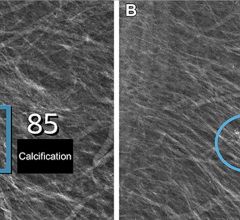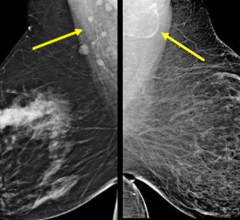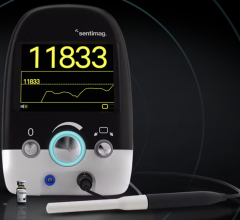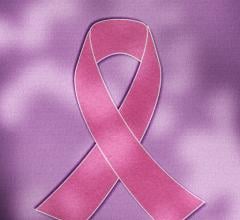
The site was an early believer in MammoPad, a soft foam breast cushion that can help relieve the discomfort many women feel during a mammogram.
John C. Lincoln Health Network is a Phoenix-based health system that includes two hospitals, two dozen physician practices and, as of May 2009, one of Arizona’s first truly comprehensive breast health centers. By providing technologically advanced breast care in a comfortable setting, the John C. Lincoln Breast Health and Research Center is setting a new standard for quality breast care.
From routine mammograms to advanced interventional procedures, John C. Lincoln provides the latest technology, including Hologic Selenia and Selenia Dimensions 2D digital mammography. In addition to providing superior exams, the state-of-the-art equipment significantly improved the breast center’s workflow. John C. Lincoln saw its mammography volume quadruple in less than a year, while enabling the staff to focus even more on patient care.
Improved Workflow Quadruples Volume
John C. Lincoln installed its first Hologic Selenia FFDM system in one of its hospitals in January 2008. The digital system replaced two old analog systems. At that time, the hospital was averaging 250 to 300 mammograms per month. The hospital doubled its mammography volume the first year it went digital.
Following this success, John C. Lincoln planned to open its new breast center in May 2009 with two digital mammography units, but due to budget constraints and the uncertain economy, they scaled back to one. But within the center’s first week, demand quickly surpassed capacity, so Director Sherry Gage ordered a second machine from Hologic.
In September 2009, the center installed a third unit, a Selenia Dimensions 2D. The Selenia Dimensions 2D system is Hologic’s newest mammography platform that can be configured for tomosynthesis when and if it becomes available in the United States. With a total of three machines, John C. Lincoln quadrupled its mammography volume in a seven-month period compared to the prior year.
According to Gage, digital’s superior image quality and speed improved their workflow and allowed the center to cut its screening exam times by half and its diagnostic exam times by 75 percent.
“The improvement in image quality was amazing, particularly for women with dense breasts,” she said. “It was like somebody washing your windows – all of a sudden everything is so much clearer. We make sure to share this with our patients, to show them that we’re not just offering this because it’s the latest trend. There’s really an enormous benefit.”
Digital mammography is also amazingly fast, particularly the new Selenia Dimensions 2D system, Gage says. With instantaneous image acquisition, technologists can position more accurately and even perform repeat views almost instantly if necessary. Patients no longer have to leave the room and technologists no longer have to process films. As a result, John C. Lincoln began scheduling both screening and diagnostic appointments every 10 minutes.
“Ten minutes is ample time for a mammogram when you have that type of workflow,” Gage said. “The ease and workflow of digital mammography is amazing.”
The streamlined workflow enables John C. Lincoln to better serve its patients by providing same-day diagnostic work ups and results, screening results within 24 hours and mammography appointments in 72 hours or less.
Truly Comprehensive Care
Customer service is as important to John C. Lincoln Breast Health and Research Center as offering the latest technology. That is why they were careful to ensure that the improved workflow did not come at the expense of patient care. Despite the fact that the center was accommodating four times as many patients, technologists discovered they were able to offer better care, including enhanced patient education.
Every woman receives 20 minutes of one-on-one personal attention with their technologist. The first 10 minutes are spent in a separate room, filling out paperwork and discussing patient concerns. When the technologist takes the patient into the exam room, another technologist enters with the next patient and repeats the process.
“This allows us to maintain an efficient workflow, while still providing patients with personal attention. This is hard to do when a technologist is simultaneously trying to fill out paperwork, talk to the patient and set up the equipment in the exam room,” Gage said.
Their Hologic TechMate technologist workstations offer staff members a greater opportunity to educate patients during the exam. Technologists use the workstations to recall previous images and even manipulate and enhance images on the screen. The TechMate is always turned towards the patient, and technologists explain what the patients see on the screen.
“When you educate the patient, they tend to relax more because they know what you’re doing and why you’re doing it,” said Gage. “Education is very important to us. Not only do we have state-of-the-art technology but we’re explaining that to the patients.”
In fact, it is the emphasis on education that sets the Center apart. Mammography is rarely the beginning or the end of the center’s involvement with a patient’s breast health.
“Technology is important, but you also need to educate patients to take control of their health,” Gage said. “We’re very big on education and walking the patient through the entire journey of breast cancer.”
The journey often begins with risk assessment, followed by mammography, and, if necessary, ultrasound, breast MRI, breast biopsies, surgery, radiation oncology or reconstructive surgery. All of these treatment are accessible at the breast center. A patient care coordinator assists women at every step, including scheduling appointments and communicating with referring physicians. The state-of-the-art facility also features a full-service library with reference materials and brochures as well as books that patients can take home. “We educate patients about everything – nutrition, health and why they need at mammogram at a particular age,” said Gage. It is this same dedication to service that sets John C. Lincoln Breast Health and Research Center apart from its competitors.
This case study was supplied by Hologic.
The site was an early believer in MammoPad, a soft foam breast cushion that can help relieve the discomfort many women feel during a mammogram.



 July 29, 2024
July 29, 2024 








